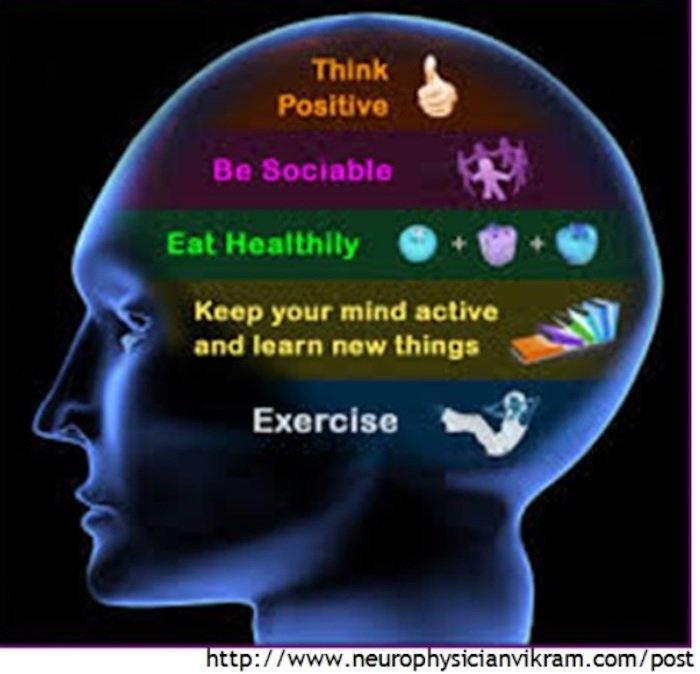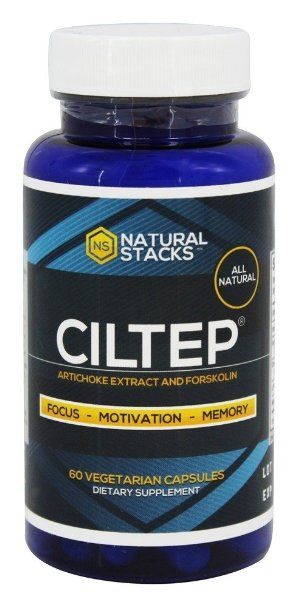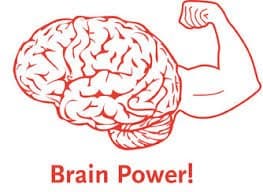How You Can Beat Dementia and Build A Bullet-proof Brain
There’s nothing better than a bullet-proof brain. And nothing more important to you. Your brain is who you are. Read, watch two videos and discover how you can beat dementia and build a bullet-proof brain.
A bullet-proof brain might not the be first item on your self-improvement list. Perhaps you’re thinking more about shapely legs, big arms or a taunt belly. Sounds good to me, however, that’s not what we are, but what we have.
Who we actually are is our mind. And if we wish to exist, we need both it and the organ that enables it to exit, our brain. We need to make it a bullet-proof brain that can endure the ravages of age.
We accept it when we see our older friends and relatives slow down and become fragile, but when we see them lose their minds, we shudder. it’s as if we’ve lost them completely, because they are lost even to themselves.
Cognitive dysfunction is a major health problem, one you don’t want to have. Many neuropsychiatric and neurodegenerative disorders, such as schizophrenia, depression, Alzheimer’s Disease dementia, cerebrovascular impairment, seizure disorders, head injury and Parkinsonism, can debilitate you severely, and, in effect, make you not you.
The smart play is to begin now to actively maintain the health and vitality of your brain.
In this article, we’re going to explore what you can do to build a bullet-proof brain. Read on to learn how to ensure your brain is in good health and continues to delight you throughout your long, vital life.
In this article you'll discover:
- Which plants/herbs can best protect your brain;
- Why exercise is essential for a long-lasting, healthy brain; and
- Links to exercise routines you can do to build yourself a bullet-proof brain.
Let’s begin!
Herbs Help Build A Bullet-proof Brain
Phytochemicals from medicinal plants play a vital role in maintaining the brain’s chemical balance and to treat cognitive disorders, claims a study by Professor G. Phani Kumar of the Indian Institute of Technology and Farhath Khanum entitled Neuroprotective potential of phytochemicals and published in the National Center for Biotechnology Information (“NCBI”).
The rest of this section on brain-protective plants relies on their findings. Those of you who like to read science stuff are welcome to click over to the study. The rest of you will appreciate my summary.
The first thing to know is that “phytochemicals” are chemical compounds that occur naturally in plants. (Phyto means “plant” in Greek.) Some are responsible for color and other organoleptic properties (substances experienced via the senses), such as the deep purple of blueberries and the smell of garlic.
For thousands of years, Ayurvedic and Chinese medicine have relied on medicinal herbs for their neuroprotective active phytochemical substances, such as fatty acids, phenols, alkaloids, flavonoids, saponins and terpenes.
The brain is made up of neurons and neuroglia, the neurons being responsible for sending and receiving nerve impulses or signals. We do not want these neurons to degenerate.
Neurodegeneration is a process involved in both neuropathological conditions and brain aging. Cerebrovascular and neurodegenerative disease is a leading cause of death all over the world. Cognitive dysfunction, is a major health problem in the 21st century, and many neuropsychiatric disorders and neurodegenerative disorders, such as schizophrenia, depression, Alzheimer’s Disease (AD) dementia, cerebrovascular impairment, seizure disorders, head injury, Parkinsonism, and others can be severely debilitating.
Herbal medicine has long been used to treat neural symptoms. Some have been shown to exert anti-inflammatory and/or antioxidant effects, which is a mighty fine thing, because there’s increasing evidence that neuroglia-derived chronic inflammatory responses play a pathological role in the central nervous system. To combat this inflammation, anti-inflammatory herbal medicine and its constituents are becoming a potent neuroprotector against various brain pathologies.
Read: Why Dr. Weil’s Anti-Inflammatory Food Pyramid May Be The Best Diet.
Let’s take a look at various substances derived from the plant kingdom that can contribute to making your brain healthy for a very long time.
Nootropics
Nootropics is a term used by proponents of “smart drugs” to describe medical drugs and nutritional supplements that have a positive effect on brain function. It’s a fitting appellation, given that “nootropic” (derived from Greek) means “acting on the mind”.
Drugs to improve neurofunction generally work by altering the balance of particular chemicals (neurotransmitters) in the brain by enhancing:
- Cerebral blood flow,
- Cerebral oxygen usage metabolic rate, and/or
- Cerebral glucose metabolic rate.
One of the mechanisms thought to cause dementia is decreased cholinergic (nerve cells) activity in brain. Therefore, cholinergic drugs of plant origin like: Muscarinic agonists (e.g. arecoline, pilocarpine etc.), nicotinic agonists (e.g. nicotine) and cholinesterase inhibitors (e.g. huperzine) can be employed for improving memory.
(Note: An agonist is a chemical that binds to a receptor and activates the receptor to produce a biological response.)
Some other classes of drugs used in dementia are: Stimulants or nootropics (e.g. piracetam, amphetamine), putative cerebral vasodilators (e.g. ergot alkaloids, papavarine) and calcium channel blocker (e.g. nimodipine).
There are several good websites that offer nootropic supplements, such as Nootriment.com and NaturalStacks.com that might help build a bullet-proof brain. If interested, I suggest you read the Top Most Effective Nootropic Supplements, the Entrepenuer’s Guide to Smart Drugs and Ben Greenfield’s guide on making your own natural nootropic stack.
Check out the list of nootropic supplements that Amazon.com has to offer: Click Here.
And make sure you take a look at the Ciltep Nootropic Stack recommended by Dave Asprey (the “Bullet-proof Executive”) and Tim Ferriss (the “Four Hour” wunderkind).
Neuroprotective Herbs
About 80% of people in the developing countries rely on phytomedicine for primary healthcare for themselves and livestock.
In traditional practices of medicine, numerous plants have been used to treat cognitive disorders, including neurodegenerative diseases such as Alzheimer’s disease and other memory related disorders.
Herbal products contain complicated mixtures of organic chemicals, which may include fatty acids, sterols, alkaloids, flavonoids, glycosides, saponins, tannins, terpenes and so forth.
Proponents of herbal medicines describe a plant’s therapeutic value as coming from the synergistic effects of the various components of the plants, in contrast to the individual chemicals of conventional medicines isolated by pharmacologists; therefore it’s believed that traditional medicines are effective, with few or no side-effects.
Get this: Roughly one-quarter to one-half of current pharmaceuticals originally were procured from plants!
Here are four you should know about:
#1 Ginkgo Biloba
Ginkgo Biloba has been used in traditional Chinese medicine for the improvement of memory loss associated with abnormalities in the blood circulation. The herb shows memory enhancing action by increasing the supply of oxygen, and helps the body to eliminate free radicals thereby improving memory.
#2 Panax Ginseng
Various forms of ginseng are among the most widely used herbs in Chinese medicine for boosting energy, and has been used for thousands of years as a tonic and revitalizing anti-aging herb. Ginseng is also considered an adaptogenic herb, able to increase the body’s resistance to stress, trauma, anxiety and fatigue by modulating the immune function. It’s thought to provide protection against neurodegeneration by multiple mechanisms.
#3 Bacopa Monniera
“Brahmi,” has been used in the Ayurvedic system of medicine for centuries. Traditionally, it was used as a brain tonic to enhance memory development, learning and to provide relief to patients with anxiety or epileptic disorders.
Bacopa include many active constituents that aid in repair of damaged neurons by enhancing kinase activity, neuronal synthesis, and restoration of synaptic activity, and ultimately nerve impulse transmission.
#4 Centella Asiatica or Gotu Kola
Centella Asiatica/Gotu Kola is a psychoactive medicinal plant being used from centuries in Ayurvedic system of medicine. It has been shown to decrease oxidative stress parameters; however, its exact mechanism of action in the treatment and management of neurodisorders is not fully understood.
Phytochemicals of Neuroprotective Importance
Because many phytochemicals have been shown to exert neuroprotective actions in animal and cell culture models of neurological disorders, there has been considerable public and scientific interest in the use of phytoconstituents for neuroprotection or to prevent neurodegenerative diseases.
For example, a chalcone (safflor yellow B) can protect neurons against ischemic brain injury and piceatannol can protect cultured neurons against Aβ-induced death.
Click here for definitions for Ischemia and Aβ.
Ischemia is a restriction in blood supply to tissues, causing a shortage of oxygen and glucose needed to survive.
Aβ are “amyloid beta” peptides of 36–43 amino acids that are crucially involved in Alzheimer’s disease as the main component of the amyloid plaques found in the brains of Alzheimer patients. Aβ is the main constituent of brain parenchymal and vascular amyloid; it contributes to cerebrovascular lesions and is neurotoxic.)
Epidemiological studies of human populations, and experiments in animal models of neurodegenerative disorders, have provided evidence that phytochemicals in fruits and vegetables can protect the nervous system against disease.
Many of the studies that examine the health benefits of phytochemicals focus on the fact that many of the active chemicals possess antioxidant activity and have neuroprotective effects associated with reduced levels of oxidative stress. For example, resveratrol, quercetin and catechins reduced oxidative stress and protected cultured hippocampal neurons against nitric-oxide-mediated cell death.
Let’s take a look at five of these…
#1 Sulforaphane
Sulforaphane is an isothiocyanate present in high amounts in broccoli, brussels sprouts and other cruciferous vegetables. Several studies have reported neuroprotective effects of sulforaphane in animal models of both acute and chronic neurodegenerative conditions. In a rodent model of stroke, sulforaphane administration reduced the amount of brain damage, brain edema and protected retinal pigment epithet. Sulforaphane has been reported to protect cultured neurons against oxidative stress and dopaminergic neurons against mitochondrial toxins.
I get a healthy dose of sulforaphane from the cruciferious veggies I steam, saute and put in my smoothies, but if none of that is your habit, supplement.
#2 Hypericin (St. John’s Wart) and Pseudohypericin
There’s strong evidence that hypericin and pseudohypericin contribute to the antidepressant action. Hypericin is also known as St. John’s Wort.
This chemical appears to block synaptic re-uptake of serotonin, dopamine, and norepinephrine. Blocking neurotransmitter re-uptake elevates their synaptic concentration. This represents another mechanism by which synthetic antidepressants may operate.
#3 Curcumin
If you haven’t heard of curcumin, you need to earwax therapy. It seems each day brings a new slew of health benefits attributable to this compound of the Indian spice tumeric.
Several beneficial effects of curcumin for the nervous system have been reported. In an animal model of stroke, curcumin treatment protected neurons against ischemic cell death and ameliorated behavioral deficits.
Cell culture and animal model data show that dietary curcumin is a strong candidate for use in the prevention or treatment of major disabling age-related neurodegenerative diseases like Alzheimer’s, Parkinson’s, and stroke. Moreover, curcumin has been shown to reverse chronic stress-induced impairment of hippocampal neurogenesis and increase expression of brain-derived neurotrophic factor (BDNF) in an animal model of depression.
You can eat lots of turmeric, but the best way to get curcumin into body so that it’s bioavailable is through supplementation.
#4 Trans-Resveratrol (etc.)
(Note: see update here.)
Trans-Resveratrol, a phytophenol present in high amounts in red grapes and exhibits high antioxidant activity. It rapidly enters the central nervous and can protect neurons in the brain and spinal cord against ischemic injury. Administration of resveratrol to rats reduced ischemic damage to the brain in a model of stroke, and also protected spinal cord neurons against ischemic injury.
Trans-Resveratrol can protect cultured neurons against nitric oxide-mediated oxidative stress-induced death. Similarly, resveratrol protected dopaminergic neurons in midbrain slice cultures against metabolic and oxidative insults, a model relevant to Parkinson’s disease. Resveratrol protected cells against the toxicity of mutant huntingtin in worm and cell culture models. In models relevant to Alzheimer’s disease, resveratrol protected neuronal cells from being killed by amyloid β-peptide and promoted the clearance of amyloid β-peptide from cultured cells.
In other words, resveratrol is a good candidate for your supplement list. That said, Pterostilbene is probably better.
Click here to read why Pterostilbene may be better.
Pterostilbene is a polyphenol shown to improve metabolic health in lab studies. Polyphenols are a class of antioxidants that comprise over 4,000 species, and are found naturally in blueberries and grapes.
Pterostilbene is similar to resveratrol, that grape “extract” found in red wine that has been heralded as a longevity promoter. Recent studies suggest that pterostilbene is actually superior to Resveratrol, and anti-aging expert Josh Mitteldorph compares it to resveratrol here. Examine.com rates its specific effectiveness for blood pressure, HDL, blood glucose and more here.
It’s up to you; choose one or both:
#5 Allium and allicin
You know these organosulfur compounds; they’re the allium and allicin present in high amounts in garlic and onions. And they’re neuroprotective.
Why You Need Exercise to Keep Your Brain Sharp
Now that you know what plants and herbs to focus on to maintain good brain health in your dotage, let’s turn to exercise. Here we rely on doctors Whitbourne and Mercola.
Whitbourne is first up.
Six Reasons Exercise Builds A Better Brain
Susan Krauss Whitbourne, Ph.D., is a professor of Psychological and Brain Sciences at the University of Massachusetts Amherst. Her research covers a wide range of topics related to adult development and aging, including personality development through midlife, contributors to successful aging, predictors of memory performance, and the relationship between physical health and sense of personal identity.
She’s written a few books, including The Search for Fulfillment: Revolutionary New Research That Reveals the Secret to Long-term Happiness.
It’s an understatement to say that Dr. Whitbourne knows the brain and what it likes, so listen up and absorb her six reasons to exercise for the brain, cultivated from this article she wrote.
#1 Exercise Lowers Dementia Risk
Exercise lowers your chances for developing dementia based on cardiovascular illness because you’re improving the flow of blood throughout your body, including your brain.
It’s hard to say that exercise could actually slow or prevent the neuron death responsible for Alzheimer’s disease, because dementia due to cardiovascular disease is hard to distinguish from other forms of dementia. Nonetheless, by preserving the neurons in your brain, exercise can give you an added advantage should you develop this otherwise untreatable disease.
It’s even possible that exercise can help slow or prevent Alzheimer’s disease by improving your glucose and fat metabolism because some of the brain alterations found in Alzheimer’s disease may be due to abnormalities in these processes. For example, researchers have found recently that lowering a person’s risk for diabetes can lower the risk of Alzheimer’s disease. It’s possible that lack of a healthy lifestyle may have led the illness to develop in many older adult sufferers today. To the extent that middle-agers are now more likely to exercise than were their parents, we may actually see fewer people developing dementia in the coming years.
#2 Exercise Lowers Anxiety
When exercise improves your mood, lowering your anxiety happens straight away. As your levels of endorphins increase, all that worry begins to diminish. When you exercise, you also refocus your attention from your daily problems to the workout itself. You can gain a fresh perspective on even the most preoccupying concerns in your life by taking an exercise break. When you return to these daily problems, you approach them with renewed energy and even some new ways to figure out solutions.
#3 Exercise Feels Like Fun
If you find the kind of exercise that fits your personality and motivational needs, you can actually have a good time while your body does the work. Some people need to exercise in a group class because they enjoy the social opportunities it provides, while others prefer to have time to themselves away from the stress of work and family. Whatever you choose to do for exercise, once it’s routine, you’ll find that the activity itself becomes rewarding. Perhaps it’s those endorphins or the benefits of social support from your exercise-mates. Whatever the cause, long-term exercisers love this natural “high”. Once you get to that point, exercise enriches the quality of life.
#4 Exercise Boosts Memory
The effects of exercise on many of your bodily systems ultimately pays off in improving your cognitive function. There are now volumes of studies on humans as well as lab animals showing that regular physical exercise helps your neurons stay in shape particularly in the memory areas of your brain. Moderate walking can help your brain’s memory center, the hippocampus, maintain its health and vitality. Memory also benefits from a general lowering of cortisol, the stress hormone, associated with the improved mood and anxiety levels you experience from your regular workouts.
#5 Exercise Builds Intelligence
Along with memory, your intellectual skills benefit from regular physical activity. It also helps if you can build in some mental activity as well. As oxygen flows more freely to your brain, not only does your hippocampus benefit but so does the part of your brain involved in planning and reasoning (the prefrontal cortex). Mental activity, particularly involvement in exercises that require you to respond quickly, also boosts your intelligence and even your ability to carry out the various activities of daily living.
#6 Exercise Is A Great Mood Enhancer
People who exercise regularly also have lower risk of depression. Our pill-popping culture tends to emphasize medical interventions for psychological disorders over behavioral treatments. Exercise is one of these behavioral treatments. Aerobic exercise improves your mood by causing your body’s endorphins to kick in. These are the natural “feel good” neurotransmitters that start to exert their effects after about 20 minutes of training. These regular exercise-related boosts eventually improve your overall mental health over the long term.
Read my articles on Depression
If you need more reasons to exercise, here are several more from Dr. Whitbourne.
Builds aerobic power. Your aerobic capacity is your body’s ability to work at maximum capacity by getting oxygen from the air to your body’s tissues. Ordinarily, people lose about 1 percent a year of their aerobic power or, if you’d like to do the math, 10 percent per decade. If you start calculating at the age of 40, this means that people can lose 30 percent of their maximum aerobic capacity by the time they reach age 70. That’s a lot of unnecessary huffing and puffing. Both long-term and short-term exercise training studies show that you can cut this loss in half so that you’re losing 15 precent rather than 30 percent in that 30-year period. Many of the other benefits of exercise stem from this basic fact, so if you remember nothing else from this list, building aerobic power is your most important reason to exercise.
Reduces blood pressure. Chronic hypertension is the number one form of heart disease. The causes of hypertension include the increased plaque in the arteries that builds up from consuming a high-fat diet. Exercise helps reduce your blood pressure, in part, by attacking the plaque in your arteries. As the arteries widen, the blood flows through more freely, and your blood pressure eventually starts to drop. Hypertension also decreases as the result of exercise because your heart, a muscle, is getting a workout. The stronger your heart muscle gets, the greater its ability to pump blood through the arteries, which also helps to reduce your blood pressure.
Lowers Type 2 diabetes risk. You’ve probably heard that an increase in the prevalence of Type 2 diabetes is becoming a world-wide public health crisis. Even if you don’t care about the health of the world, you should care about your own risk of diabetes. The complications of adult-onset Type 2 diabetes pose a serious risk to your physical well-being. By engaging in regular physical exercise, you improve your body’s ability to metabolize glucose, the key to staving off this disease.
Maintains immune functioning. Your immune system is what protects you from infection and other chemical toxins. The immune system also plays a role in maintaining a healthy response to stress (more on this later). Although for many years, researchers talked about “immune senescence” as an inevitable result of aging, we now know that the studies showing these inevitable declines were conducted on people who didn’t exercise. Even short-term exercise programs can reverse some of the deleterious effects of aging on this sensitive, complex, and crucial regulatory system which controls so much of your everyday health.
Reduces body fat. Your BMI, or body mass index, provides an approximate measure of your overall metabolic status. To calculate yours, go to the Centers for Disease Control website. If you’re in the overweight to obese categories now, a regular program of aerobic exercise can bring your BMI down to normal levels mainly by swapping the fat for the fat-free tissues in your body. The good news is that the more you exercise, the more you are able to work off your body fat because muscle “burns off” more calories, effectively speeding up your metabolism.
Keeps bones strong. Another normal age-related change is the loss of bone mineral strength. Here again, the magic number of a 1 percent loss per year seems to be the considered wisdom of how fast our body’s bones get thinner and weaker. Once again, though, exercise is the key to maintaining your bone’s health. The specific form of exercise required for bone strength involves resistance training in which you lift weights. The amount of resistance training varies according to your age and physical strength, but it’s got to be more than just picking up a gallon of milk and moving it from the grocery bag to the frig. You need to spend no less than an hour a week of increasingly strenuous weight-lifting until you reach your maximum potential.
Builds muscle mass. Resistance training also builds your muscles. In fact, the tension of your muscles against your bones is what also helps your bones get the maximum benefit of weight lifting. If you don’t engage in regular weight-lifting, you’ll lose muscle strength at the rate of – guess what—1 percent per year. If you do, you can cut this – guess again—in half. In fact, the process of “sarcopenia,” which refers to normal loss of muscle strength with age, is best reversed by this type of exercise. Keeping your muscles strong also helps you stay more aerobically fit and helps you maintain a healthy lean (or fat-free) body mass.
Improves breathing. Aging affects the tissues of the lung in some ways that can’t be changed by exercise. However, exercise can improve your breathing by strengthening the muscles that help your lungs open up to bring in oxygen and compress to push out carbon dioxide. Exercise also improves the efficiency with which oxygen permeates the cells of your body through its effects on aerobic capacity. While the non-exercisers will have to stop their workout to catch a breath, you’ll be able to push on past them due to this greater efficiency of your breathing capacity.
Boosts your energy. Because your body is functioning more efficiently, you’ve got more oxygen to fuel your body’s cells. You also feel fewer aches and pains and have greater strength. As a result, you can go about your daily activities feeling less fatigued, stressed, and weary. Although going to the gym early in the morning or late in the afternoon may feel like the last thing you have energy to do, once you build exercise into your daily routines, these workout bouts will actually seem less tiresome because you’ll feel more mentally and physically capable of carrying them outReduces the risk of arthritis. The most commonly experienced chronic illness in middle-aged and older adults, arthritis occurs due to abnormalities in the cartilage and outgrowth of bones in the joints. Unlike the other physical benefits of exercise, reducing the chances of arthritis doesn’t depend on heavy duty aerobic activity or even weight training. In fact, you may actually heighten your risk of arthritis if you do too much of the wrong kind of exercise. Running on the pavement, particularly in shoes that aren’t appropriately cushioned, can cause you to be more likely to get arthritis. Instead, you need to engage in stretching and flexibility training through yoga, Tai Chi, or other ways to increase the range of movement of your joints. This will lower your risk of injury through muscle tears or torn ligaments, and in the process protect your joints from damage caused by overuse.
Improves sex life. Keeping your muscles active through use helps promote the demands placed on your endocrine glands to produce more hormones. With more muscle mass comes greater stimulation to produce androgens which help both men and women maintain their sexual functioning. You are also likely to feel more fit and be more fit, which in turn will benefit your interest in and ability to carry out sexual activity. Your emotional resilience will also be greater if you exercise, which also benefits your relationship health.
Brings about better sleep. Although sleep experts recommend that you not exercise right before you go to bed, exercise during the day benefits your sleep at night. The physical exertion you engage in during the day helps your body’s circadian rhythm keep in tune. Sleeping better at night also improves, in turn, your immune functioning and even lowers your risk for heart disease, diabetes, and cognitive impairment. A win-win for sure!
Reduces absenteeism. You may feel like taking time off work to go to the gym is a luxury you can’t afford, but by improving your overall health, exercise can help you ward off both acute and chronic illness. You’ll get fewer colds, be less prone to the flu, and avoid the accidents or surgical interventions that can force you to take prolonged absences. In a tough economy, you need every edge you can get, and by showing up for work every day, you’ll maintain that edge over your absentee-prone non-exercising coworkers.
Exercise Can Make Your Brain a Decade ‘Younger’ Than Your Calendar Age
If Dr. Whitbourne’s six reasons are insufficient for you to start an exercise program for your brain’s sake, perhaps Dr. Joseph Mercola’s declaration will move you to leap to your feet.
He says that:
“Exercise can make your brain a decade younger than your calendar age!”
Mercola is referring here to the potential disparity between chronological age (how many years you’ve had a body) versus biological age (the age indicated by various biomarkers, such as telomere length and DNA methylation)
Here’s his story “at a glance” as he likes to say:
- Exercise improves memory and cognition, and helps stave off dementia. Strength training — and working your leg muscles in particular — has been shown to have a particularly strong impact on brain function and memory
- Among seniors, engaging in medium-to-high intensity exercise can slow brain aging by as much as 10 years
- Exercise also helps dispel depression — in many cases more effectively than antidepressants — and purges your body of stress chemicals associated with stress-related depression
Charlie Rose picks up from here in this short video:
According to studies referenced by Dr. Mercola,
Older adults who reported either light or no exercise at all experienced a cognitive decline equal to 10 more years of aging when compared to people who were moderate to intense exercisers.
Our study showed that for older people, getting regular exercise may be protective, helping them keep their cognitive abilities longer.
Exercise promotes brain health by releasing hormones like brain-derived neurotropic factor (BDNF) from the muscles, which encourage the growth of new brain cells.
This process is known as neurogenesis or neuroplasticity.
Your brain’s memory center (hippocampus) is particularly adaptable and capable of growing new cells throughout your entire lifetime, even into your 90s, provided your lifestyle supports it.
In one study, exercising mice grew an average of 6,000 new brain cells in every cubic millimeter of hippocampal tissue sampled. Similarly, a year-long human study found that adults who exercised regularly enlarged their brain’s memory center by one to two percent per year, where typically the hippocampus tends to shrink with age.
Exercising in Your 20s May Result in a Sharper Middle-Aged Mind
Yes, I have to get this in here.
My guess is that few twenty-somethings read my ramblings, but if you know someone so blessed as to be both a youngster and willing to think about the future, send them this article and have them watch this video:
As noted in the above video, your brain needs a significant supply of oxygen to function properly, which helps explain why what’s good for your heart and cardio system is also good for your brain.
Various studies looking at the link between exercise, heart health, and brain health found that people who had greater cardiorespiratory fitness in their teens and 20s scored better on cognitive tests in their mid-40s and 50s. (See Reuters April 2, 2014 , CBS News April 2, 2014 , TIME April 2, 2014 .)
Those who were fitter in their early adulthood also scored better on tests designed to assess reaction speed and the mental agility needed to answer trick questions. More importantly, the impact of fitness was deemed to be independent of other dementia-related risk factors such as diabetes, high cholesterol, and smoking.
To read Dr. Mercola’s entire article, got to Exercise Can Make Your Brain a Decade ‘Younger’ Than Your Calendar Age.
Some Exercise Ideas For A Bullet-proof Brain
Now that you know why you should exercise, how about a workout?
For that we’re going to grab some suggestions presented in various articles on this site. I’ll simply copy a few links. You read the titles and follow your fancy.
3 Expert-approved Anti-aging Exercise Routines You Can Do and Why You Should Bother
It’s been my experience, and now the science affirms, that no one thing does as much to improve the quality and robustness of life as certain anti-aging exercise routines that you can bstart right now. Here’s why you should bother…
How To Get Lean and Muscular Like Sean Penn
How did Sean Penn get so buff for his The Gunman movie role? More importantly, what can you do to get so lean and muscular, especially if you’re over 40? (Penn is 54.)
Get Functionally Fit Forever With These Six Bodyweight Exercises
Six body weight exercises you can do anywhere that will make you functionally fit forever. (Or at least a very long time!)
The Functionally Fit Fast Workout — Strong, Enduring, Mobile (Part I)
The reason you rarely see gym-goers improve their fitness is because they do not perform the right exercises with the required effort. If you’d like to get strong, muscular, more flexible and improve your cardio, dig in and watch this six-part workout.
Your Bullet-proof Brain Takeaway
Two things and one assertion.
Two Things:
- Plants, in the form of herbs, spices and foods, constitute an unlimited source of molecules available for improving human health, the brain in particular.
- And exercise is an essential stimulus to keep the brain healthy and vital.
One Assertion:
If there’s anything worth protecting, it’s the thing that makes you you, your brain.
Last Updated on February 7, 2024 by Joe Garma





















